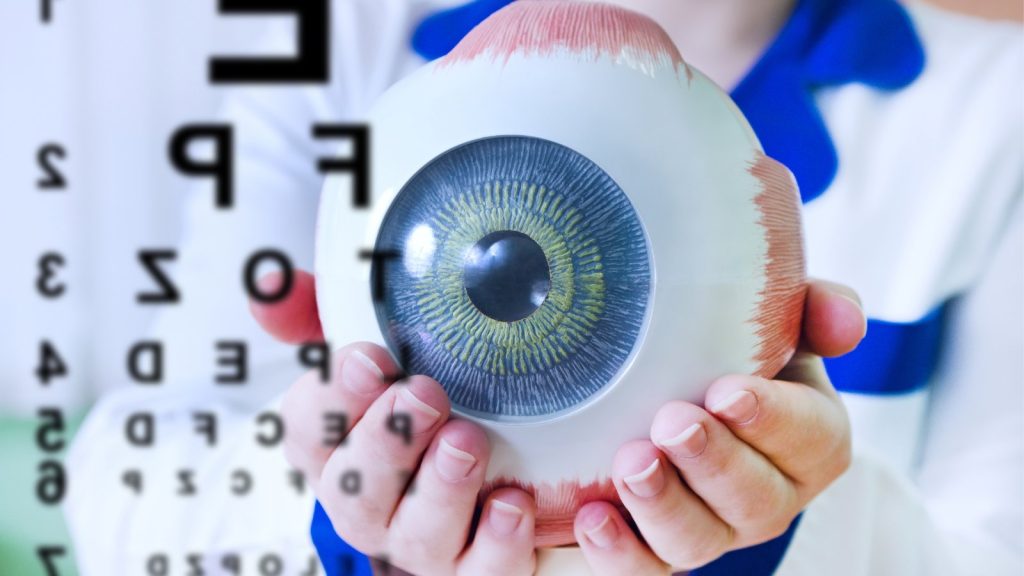Ideal Refractive Surgeries in AL: State-of-the-Art Eye Treatment
Ideal Refractive Surgeries in AL: State-of-the-Art Eye Treatment
Blog Article
Understanding the Various Eye Conditions Treated by Specialized Eye Care Professionals
In the realm of eye care, specialized professionals play a vital duty in detecting and dealing with a large selection of eye problems. From typical refractive mistakes that impact vision clearness to age-related conditions that position challenges as we get older, the experience of these professionals encompasses handling vision-threatening illness and elaborate corneal disorders. The intricacies of neurological eye conditions present one-of-a-kind obstacles that require specialized care. As we get started on this expedition of the different eye conditions resolved by specialized eye treatment professionals, it comes to be noticeable that the detailed web of ocular wellness holds a myriad of interesting insights waiting to be revealed.
Typical Refractive Mistakes
Refractive errors prevail visual problems brought on by a flaw in the eye's capacity to correctly concentrate light, causing blurred vision. One of the most prevalent types of refractive mistakes include myopia (nearsightedness), hyperopia (farsightedness), astigmatism, and presbyopia. Nearsightedness occurs when the eyeball is too lengthy or the cornea is also curved, triggering remote objects to appear blurred. Hyperopia, on the various other hand, happens when the eyeball is as well brief or the cornea is also level, resulting in close-by things being out of focus. Astigmatism is defined by an irregularly designed cornea, causing altered or blurred vision whatsoever distances. Presbyopia is an age-related problem where the lens loses its versatility, making it tough to concentrate on close things.
These refractive mistakes can be remedied through various approaches, including eyeglasses, contact lenses, or refractive surgical procedure. Eye care experts play a vital duty in diagnosing and managing refractive mistakes to help individuals achieve more clear vision and improve their lifestyle.
Age-Related Eye Conditions
As people age, their eyes might be prone to a variety of conditions past refractive errors that can influence their vision and general eye health and wellness. Age-related eye problems prevail and can considerably influence the lifestyle for older grownups. One of one of the most prevalent age-related eye problems is age-related macular degeneration (AMD), an illness that causes central vision loss and can make tasks like reading and driving tough. refractive surgeries in al. Cataracts, another typical problem among older people, cause clouding of the eye's natural lens, bring about blurred vision. Glaucoma, defined by damages to the optic nerve, is also a lot more prevalent with age and can lead to field of vision loss or loss of sight if left without treatment. In addition, presbyopia, a condition where the eye's lens loses adaptability, is an all-natural part of aging and causes trouble concentrating on close items. Routine eye tests with specialized eye treatment professionals are important for very early discovery and management of these age-related eye conditions to protect vision and preserve eye wellness as people get older.
Vision-Threatening Diseases
Vision-threatening diseases encompass a series of serious eye problems that have the possible to dramatically affect an individual's vision and overall aesthetic feature. These illness position a risk of permanent vision loss otherwise without delay identified and treated by specialized eye care specialists. Some typical vision-threatening diseases consist of glaucoma, diabetic person retinopathy, age-related macular degeneration (AMD), and retinal detachment.
Glaucoma is a team of eye conditions have a peek at this website that harm the optic nerve, frequently due to high intraocular stress, leading to peripheral vision loss and prospective loss of sight if left without treatment. AMD is a dynamic condition influencing the macula, leading to central redirected here vision loss.
Early discovery, regular eye examinations, and prompt intervention are vital in managing vision-threatening illness to maintain eyesight and preserve top quality of life. Specialized eye care experts play an essential role in diagnosing, dealing with, and taking care of these conditions to stop irreparable vision loss.

Corneal Disorders
Corneal problems encompass a range of problems that impact the clear front part of the eye, referred to as the cornea. These conditions can bring about discomfort, aesthetic disturbances, and in serious instances, vision loss. One common corneal condition is keratoconus, where the cornea thins and bulges outside right into a cone shape, triggering astigmatism and obscured vision. Corneal dystrophies, such as Fuchs' dystrophy, result in progressive vision loss due to irregular deposits in the cornea. Corneal abrasions, typically triggered by injury or foreign items, can bring about pain, inflammation, and level of sensitivity to light. In addition, infections like keratitis can inflame the cornea, potentially bring about scarring and vision impairment if not immediately dealt with. Therapy for corneal disorders varies relying on the details condition however might consist of drugs, contact lenses, or in severe situations, corneal transplants. Normal eye exams are vital for very from this source early discovery and administration of corneal problems to maintain vision and eye health and wellness.
Neurological Eye Problems
Neurological eye problems include disorders that influence the link between the eyes and the mind, affecting visual processing and overall eye function. These problems can materialize in various methods, affecting vision, eye movements, and even the coordination in between the eyes. One typical neurological eye condition is optic neuritis, identified by swelling of the optic nerve resulting in vision loss, color desaturation, and discomfort with eye motion.
Another substantial condition is nystagmus, where the eyes make repetitive, unchecked movements, influencing visual acuity and deepness perception. In addition, conditions like amblyopia, frequently described as "lazy eye," arise from unusual aesthetic advancement in very early youth, causing reduced vision in one eye.
Neurological eye problems require specific care from experts like neuro-ophthalmologists that have proficiency in both neurology and ophthalmology. Medical diagnosis typically entails an extensive eye exam, imaging research studies, and cooperation with neurologists to attend to the underlying neurological concerns affecting the aesthetic system. Therapy approaches can consist of medication, vision therapy, or in extreme cases, surgical interventions to take care of these complex conditions successfully.

Final Thought
To conclude, specialized eye treatment professionals deal with a wide variety of eye problems, including usual refractive errors, age-related eye conditions, vision-threatening conditions, corneal disorders, and neurological eye conditions - refractive surgeries in al. By recognizing these various conditions and looking for appropriate treatment from eye treatment specialists, people can keep optimal eye health and wellness and vision. It is vital to prioritize routine eye exams and follow recommended treatment strategies to maintain and safeguard one's vision for the future
Report this page